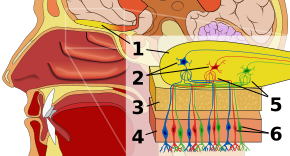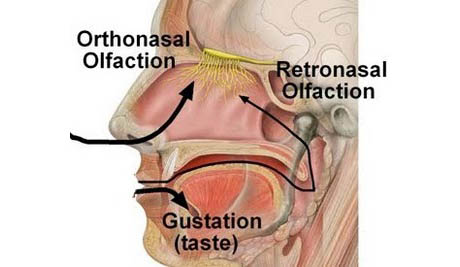Reference




Moonshot's Answer
Retronasal smell is considered a combination of smell and taste modalities due to the way it contributes to the perception of flavor. When we eat, the aroma from the food inside our mouth is forced upwards through the retronasal passage into the nasal cavity, where it is detected by olfactory receptors. This process is distinct from orthonasal olfaction, which involves the direct inhalation of odors through the nose. The retronasal smell interacts with the taste sensations from the gustatory system, creating a unified perception of flavor. This is why retronasal smell is often described as a combination of both smell and taste, as it integrates olfactory and gustatory inputs to form our overall experience of food. The image below illustrates the pathways of orthonasal and retronasal olfaction, highlighting their role in the perception of flavor:

This dual role of olfaction in both smelling and tasting, i.e., flavor perception, makes it an important test case for understanding the interaction between different sensory modalities. The retronasal smell's contribution to flavor is a key aspect of why it is considered a combination of smell and taste.
Follow Up
Related
What were the original proposed combinations for the boroughs in Outer London?
Why do nisoxetine and a dopamine reuptake inhibitor only reduce food intake when combined?
What is the most populous combined statistical area in the Carolinas?
Which combined statistical area in the Carolinas had the highest percentage population growth?